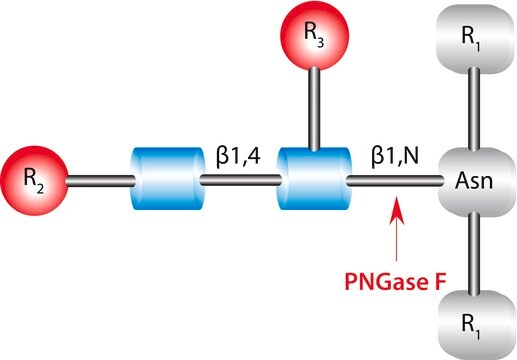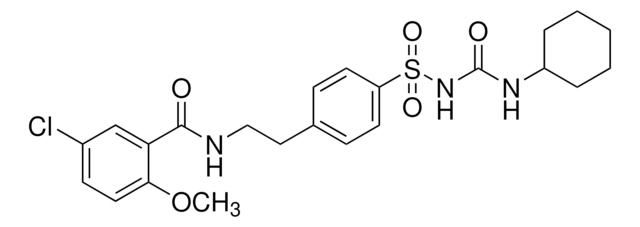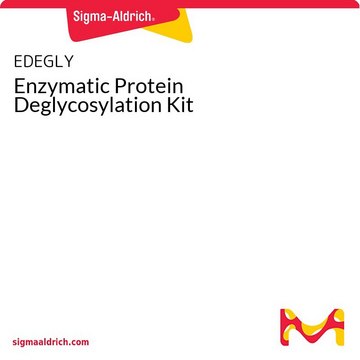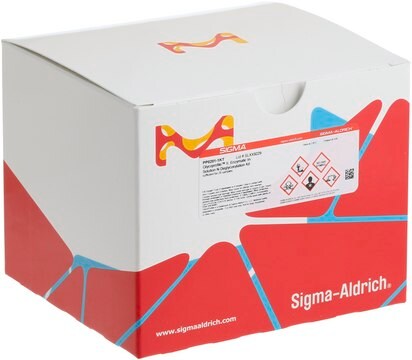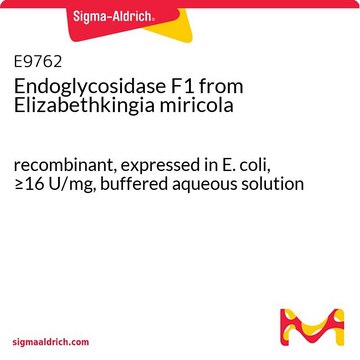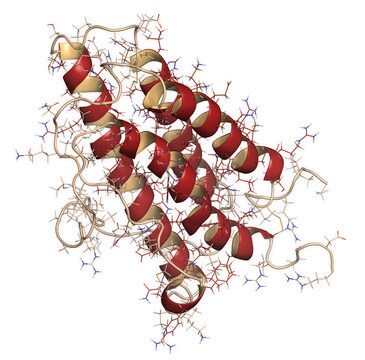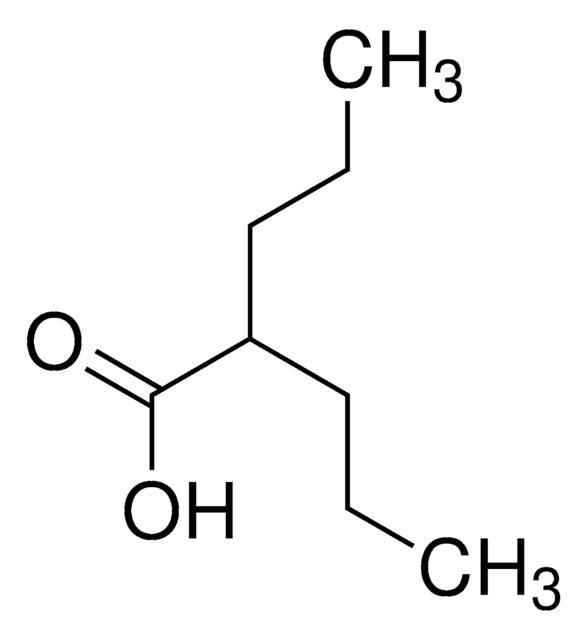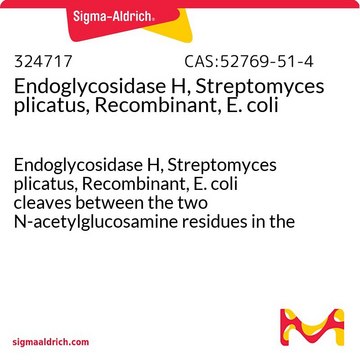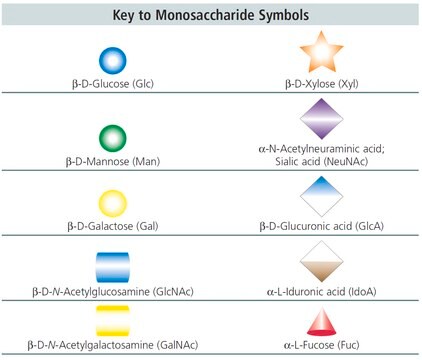G5166
PNGase F from Elizabethkingia miricola
buffered aqueous solution
Synonym(s):
N-Glycosidase F, Peptide N-glycosidase
Sign Into View Organizational & Contract Pricing
All Photos(1)
About This Item
CAS Number:
MDL number:
UNSPSC Code:
12352204
NACRES:
NA.32
Recommended Products
biological source
bacterial (Elizabethkingia miricola)
Quality Level
conjugate
(N-linked)
form
buffered aqueous solution
specific activity
≥20000 units/mg protein
mol wt
36 kDa
shipped in
wet ice
storage temp.
2-8°C
General description
PNGase F (Peptide N-glycosidase F) cleaves asparagine-linked glycoproteins, which produces carbohydrate-free peptides and detached full-length oligosaccharides.
Application
PNGase F from Elizabethkingia miricola has been used for the deglycosylation of the proteins.
Used to deglycosylate protein.
Biochem/physiol Actions
Cleaves an entire glycan from a glycoprotein provided the glycosylated asparagine moiety is substituted on its amino and carboxyl terminus with a polypeptide chain.
Unit Definition
One unit will catalyze the release of N-linked oligosaccharides from 1 nanomole of denatured ribonuclease B in one minute at 37°C at pH 7.5 monitored by SDS-PAGE. One Sigma unit of PNGase F activity is equal to 1 IUB milliunit.
Physical form
Supplied as a solution in 20 mM Tris HCl, pH 7.5, 50 mM NaCl and 1 mM EDTA
Signal Word
Danger
Hazard Statements
Precautionary Statements
Hazard Classifications
Resp. Sens. 1
Storage Class Code
12 - Non Combustible Liquids
WGK
WGK 2
Flash Point(F)
Not applicable
Flash Point(C)
Not applicable
Personal Protective Equipment
dust mask type N95 (US), Eyeshields, Gloves
Choose from one of the most recent versions:
Already Own This Product?
Find documentation for the products that you have recently purchased in the Document Library.
Customers Also Viewed
A novel humanized GLP-1 receptor model enables both affinity purification and Cre-LoxP deletion of the receptor
Jun LS, et al.
PLoS ONE, 9(4), e93746-e93746 (2014)
Ying-Nai Wang et al.
STAR protocols, 3(1), 101198-101198 (2022-03-05)
Immunotherapy via PD-1/PD-L1 blockade is a promising strategy to eradicate cancer cells. However, the PD-L1 pathological level is inconsistent with the therapeutic response and is not a reliable biomarker to stratify patients for anti-PD-1/PD-L1 therapy. Here, we describe patient sample deglycosylation
Identification and Characterization of a Novel Prokaryotic Peptide N-GLYCOSIDASE FROM ELIZABETHKINGIA MENINGOSEPTICA
Sun G, et al.
The Journal of Biological Chemistry, 290(12), 7452-7462 (2015)
Lucy S Jun et al.
PloS one, 9(4), e93746-e93746 (2014-04-04)
Class B G protein-coupled receptors (GPCRs) are important regulators of endocrine physiology, and peptide-based therapeutics targeting some of these receptors have proven effective at treating disorders such as hypercalcemia, osteoporosis, and type 2 diabetes mellitus (T2DM). As next generation efforts
Gyoung Nyoun Kim et al.
PLoS pathogens, 17(12), e1010092-e1010092 (2021-12-17)
The development of safe and effective vaccines to prevent SARS-CoV-2 infections remains an urgent priority worldwide. We have used a recombinant vesicular stomatitis virus (rVSV)-based prime-boost immunization strategy to develop an effective COVID-19 vaccine candidate. We have constructed VSV genomes
Articles
N-Linked Glycan Strategies; Sigma-Aldrich.com
Our team of scientists has experience in all areas of research including Life Science, Material Science, Chemical Synthesis, Chromatography, Analytical and many others.
Contact Technical Service